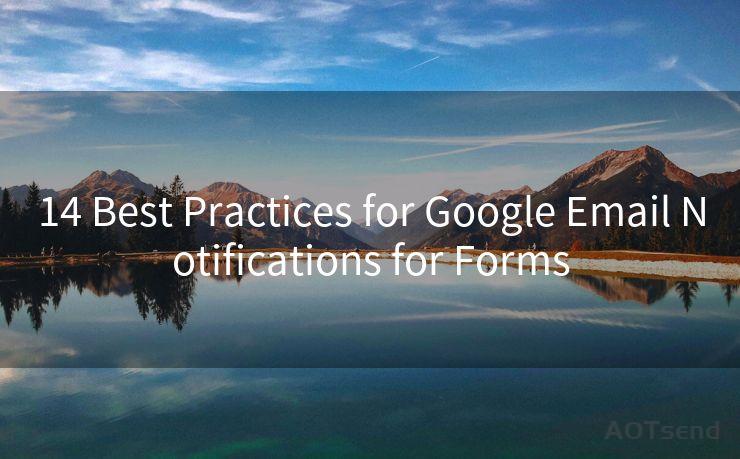14 Best Practices for Google Email Notifications for Forms




When it comes to collecting data or feedback, Google Forms is an invaluable tool. However, to make the most of it, you need to ensure that you're effectively managing the email notifications that are sent out when someone submits a form. Here are 14 best practices for optimizing Google email notifications for forms, designed to help you streamline your communication and improve your workflow.
1. Customize Your Email Templates
Don't settle for the default email template. Customize your email notifications to reflect your brand's voice and style. This personalization helps in building trust and familiarity with your respondents.
2. Clear and Concise Subject Lines
The subject line of your email notification should be clear and to the point. It should give the recipient a quick understanding of the email's content.
3. Include Key Form Data
Include the most important data from the form in the email notification. This allows the recipient to quickly glance at the key information without having to open the form itself.
4. Use Conditional Logic
Utilize conditional logic to send different email notifications based on specific form responses. This ensures that the right information is delivered to the right person at the right time.
5. Optimize for Mobile Devices
Make sure your email notifications are mobile-friendly. With the increasing use of mobile devices, it's essential that your emails display correctly on smaller screens.
6. Test Email Deliverability
Regularly test your email notifications to ensure they're being delivered without any issues. Use tools like Mail-Tester to check your email's spam score and deliverability.
7. Set Up Auto-Responses
Consider setting up an auto-response email to acknowledge form submissions. This not only improves customer service but also builds trust with your respondents.
8. Protect Sensitive Information
If your form collects sensitive information, make sure to redact or encrypt this data in your email notifications to protect the privacy of your respondents.
9. Segment Your Email Lists
Segment your email lists based on form responses. This allows you to send more targeted and relevant emails in the future.
10. Track and Analyze Performance
Use Google Analytics or other tracking tools to monitor the performance of your email notifications. This data can help you fine-tune your emails for better engagement.
11. Avoid Spam Filters
Familiarize yourself with common spam trigger words and avoid using them in your email notifications to prevent your emails from being flagged as spam.
12. Use a Professional Email Address
Ensure that your email notifications are sent from a professional and recognizable email address. This adds credibility to your emails and improves trustworthiness.

🔔🔔🔔
【AOTsend Email API】:AOTsend is a Managed Email Service for sending transactional emails. Support Email Types: reminders, authentication, confirmations, notifications, verification codes, invoices, password resets, account activations, billing statements, two-factor authentication (2FA), and one-time passwords (OTP) emails, etc. $0.28 per 1000 Emails. 99% Delivery, 98% Inbox Rate.
You might be interested in:
Why did we start the AOTsend project, Brand Story?
What is a Managed Email API, How it Works?
Best 25+ Email Marketing Platforms (Authority,Keywords&Traffic Comparison)
Best 24+ Email Marketing Service (Price, Pros&Cons Comparison)
Email APIs vs SMTP: How they Works, Any Difference?
13. Include a Call to Action
Always include a clear call to action in your email notifications, guiding the recipient on what to do next, whether it's to visit a website, make a purchase, or provide further feedback.
14. Regularly Update Your Templates
Don't forget to regularly update your email templates to reflect any changes in your brand messaging or design. Keeping your templates fresh and up-to-date ensures that your communications remain relevant and engaging.
By following these 14 best practices for Google email notifications for forms, you can enhance your communication strategy, improve respondent engagement, and streamline your workflow. Remember, effective communication is key to building strong relationships with your audience.




Scan the QR code to access on your mobile device.
Copyright notice: This article is published by AotSend. Reproduction requires attribution.
Article Link:https://www.mailwot.com/p4088.html



